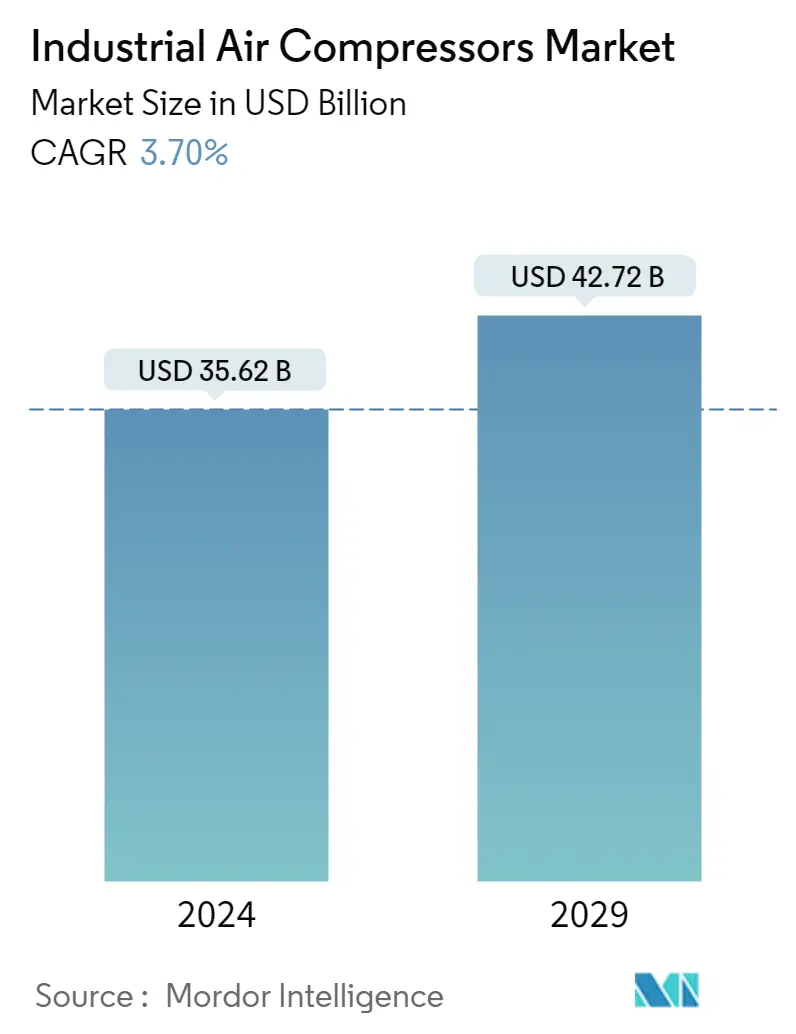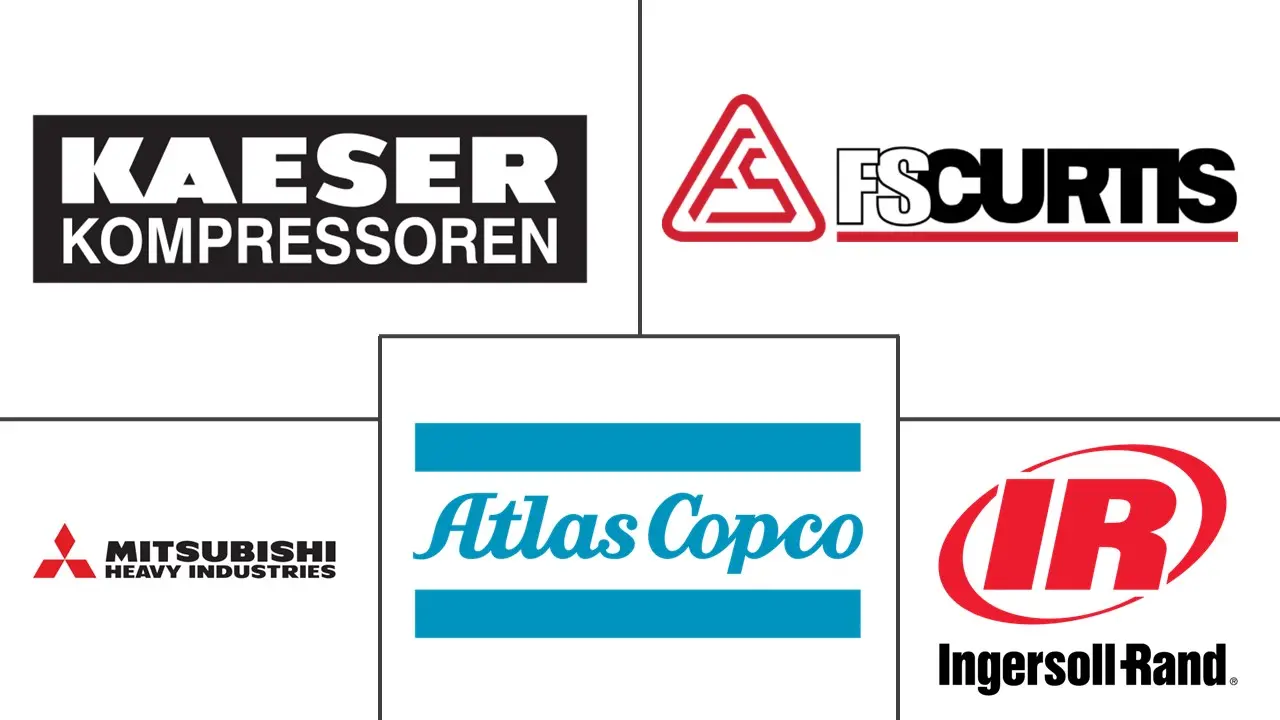Market Size of Industrial Air Compressors Industry

| Study Period | 2019 - 2029 |
| Market Size (2024) | USD 35.62 Billion |
| Market Size (2029) | USD 42.72 Billion |
| CAGR (2024 - 2029) | 3.70 % |
| Fastest Growing Market | Asia Pacific |
| Largest Market | Asia Pacific |
Major Players
*Disclaimer: Major Players sorted in no particular order |
Need a report that reflects how COVID-19 has impacted this market and its growth?
Industrial Air Compressor Market Analysis
The Industrial Air Compressors Market size is estimated at USD 35.62 billion in 2024, and is expected to reach USD 42.72 billion by 2029, growing at a CAGR of 3.70% during the forecast period (2024-2029).
Increases in the oil and gas, petrochemical, transportation, agricultural, and automotive industries globally, as well as increased government support for developing industrial compressor technology, are some important reasons that significantly speed up market expansion.
- A wide range of businesses worldwide generally uses air compressors to deliver compressed air to power complex industrial processes. Heavy-duty industrial air compressors are developed to provide higher pressure levels, as they rely on high horsepower motors and heavy-duty components. In agricultural facilities, these are used to spray crops and ventilate silos, power pneumatic machinery in the manufacturing industries, and oil and gas operations, among others.
- Air compressors have an advantage over electric power and hydraulic power due to their capability to offer flexibility, safety, and low-maintenance cost. Air compressors require fewer moving parts than electrical and hydraulic power systems. However, air compressors need special treatment for the supplied air, as any contamination in the air can damage the supply pipes, leading to corrosion in leakages, ultimately resulting in power output.
- The companies in the market are also continuously investing in developing energy-efficient air compressors. For instance, Atlas Copco mentioned that it is focusing on developing oil-injected technology for offering energy-saving compressor solutions by integrating intelligent control and monitoring systems.
- Moreover, these compressors are used based on the application and location of the compressor to be installed. For instance, reciprocating-type compressors must be installed with flywheels on the side of the wall and an enclosed belt guard, and they need spaces on the sides for maintenance. In the case of the rotary type, the compressors need to be installed so that their inlet grids and ventilation fan may not recirculate the cooling air to the compressor.
- These air compressors used in industries require special cooling units to dispense the heat generated, adding to the companies' initial setup cost. Hence, the companies are looking forward to better-performance compressors to cut down on energy and maintenance costs.
- Apart from these applications, air compressors are also used for petroleum refining, petrochemical synthesis, pipeline transportation, and gas injection. The increasing expansion of oil and gas exploration and investment in the industry are the major factors driving the market growth.
- According to Ingersoll Rand, only 10% to 20% of the energy input to the compressed air systems reaches the point of use, whereas the rest of the energy gets wasted in heat or leaks. This may account for millions of dollars for organizations having large operations.
- Air compressor installation and maintenance costs are very high. Due to the upkeep of intricate monitoring and control systems for various air compressors, the price keeps increasing. This is anticipated to slow market expansion in the near future.
- However, due to the outbreak of COVID-19, Chinese vendors closed their factories, temporarily suspending production facilities. Since the number of COVID-19 cases has reduced in China, the vendors having manufacturing plants based in the region have increased component prices by nearly 2-3%, owing to a shortage of supplies due to factory shutdown. Therefore, this has impacted the entire supply chain from China. The COVID-19 spread has also driven innovations in the compressors segment, with vendors ramping up their production to meet the sudden demand increase.
